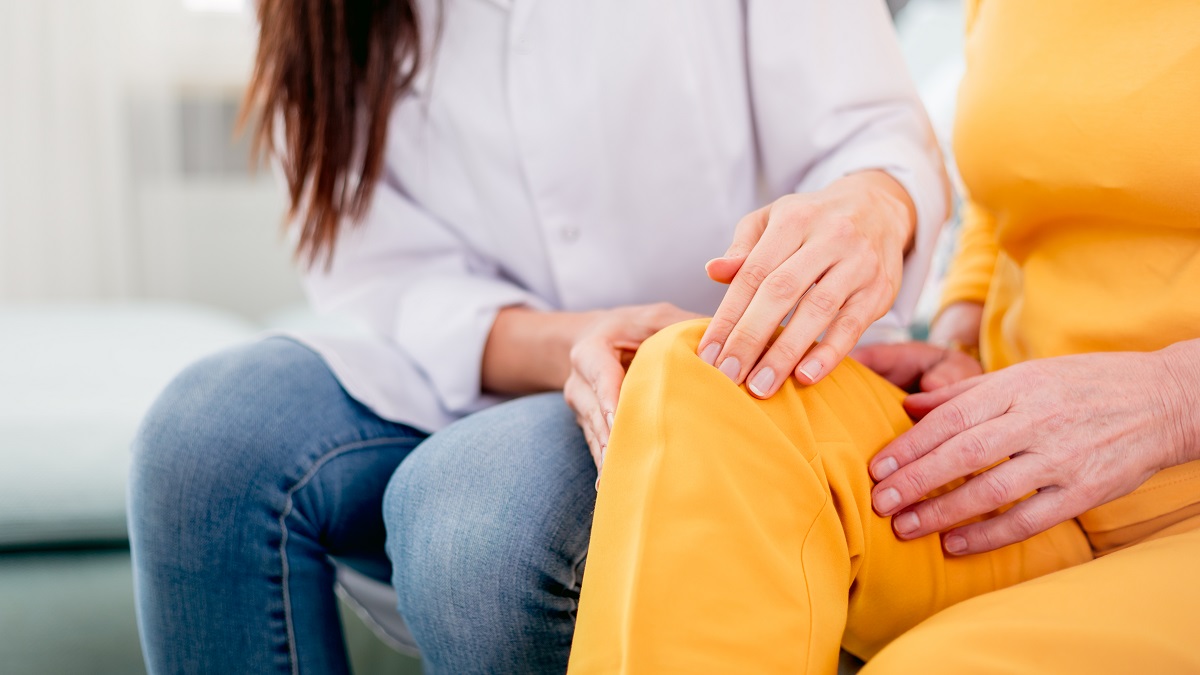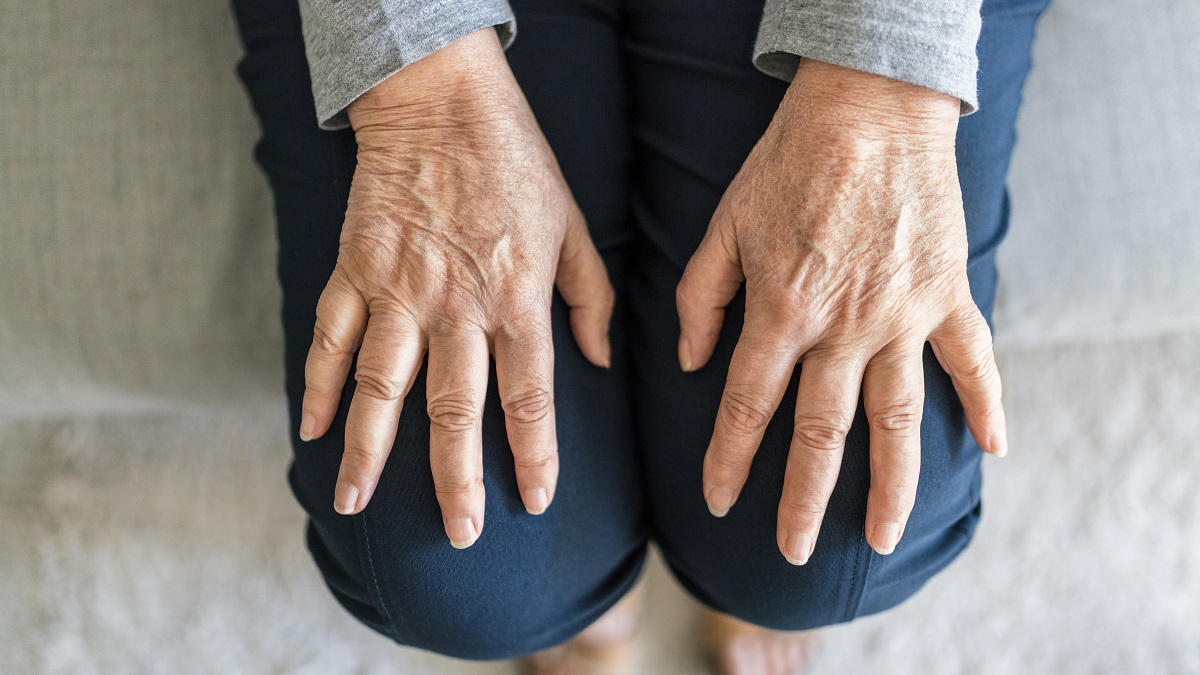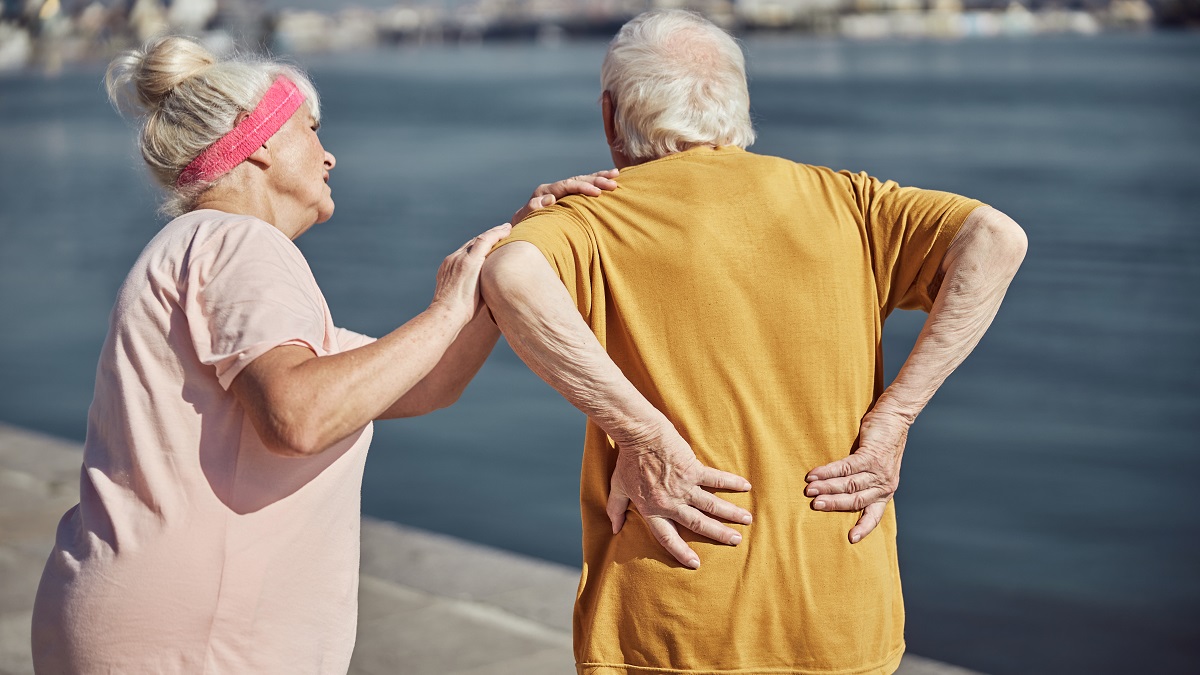If you’re wondering how to prevent knee pain in old age, the answer often comes down to taking steps today to reduce your risk. By reducing your risk for the nine most common causes and risk factors for knee pain, you can prevent a large possibility of knee pain in your future.
How does anatomy prevent knee pain, and cause it?
The knee is a joint made of four bones: the femur, tibia, fibula and patella. There are a series of muscles that also support the knee, including the quadriceps and hamstrings. Finally, these are all joined together by a carefully woven set of ligaments, meniscus, and tendons. Precious cartilage provides necessary cushioning for comfortable movement.
Click Here to Visit the Store and find Much More….
The anterior cruciate ligament (ACL) and posterior cruciate ligament (PCL) are perhaps most critical for proper knee movement. The knee is also surrounded by fluid filled sacs called bursae that provide additional cushioning.
Since it’s such a complex joint, it can sustain most of the demands we place on it every day. However, these same joints and tendons can become inflamed, leading to pain. Likewise, the delicate structures of the knee can become injured leading to pain. We’ll talk about some of the risk factors you can work to reduce today to prevent knee pain in the future from these causes.
What are the most common types of knee pain?
The knee moves in two ways: bending (flexion) and straightening (extension). However, the knee can also twist, which is the common cause of many injuries to ligaments. Those who have ligament injuries to the knee often report hearing a popping, followed by the inability to place weight on the knee.
Such twisting-related injuries can also cause damage to the knee’s tendons and meniscus. These injuries will likely cause pain, swelling, and limited movement. Often surgery is required. However, the knee is a major joint that takes the weight of the body daily; with time, wear and tear injuries may occur that leads to knee pain as people get older. Also known as degeneration injuries, these include osteoarthritis and chondromalacia patella. Both are the result of degeneration of cartilage, causing bone-on-bone rubbing and pain.
What are the most common risk factors for knee pain?
One of the largest risk factors for knee pain is age. Age increases the risk for a variety of conditions leading to knee pain, including osteoarthritis. Older people are also more likely to have weakened muscles. They are also more vulnerable to injury while playing sports or participating in normal daily activities.
A study in the journal Osteoarthritis and Cartilage found that the risk factors for knee pain and osteoarthritis are essentially the same: age, extra weight, history of knee injury, and having a job that places extra stress on the knee. Increased age and unhappiness with a person’s job had a greater impact on the incidence of knee pain than the other factors.
However, the best way how to prevent knee pain in old age is to avoid risk factors when you’re younger. Knee pain often results from osteoarthritis or sports injuries. These other nine risk factors for knee pain involve lifestyle choices that can you can manage to reduce or prevent knee pain in the future.
1. Extra weight
Extra weight is one of the largest risk factors for knee pain. The knee supports much of the body’s weight, and too much weight taxes the joint and increases the likelihood of pain. Anterior knee pain, which develops at the front and center, is one of the more common types of knee pain associated with carrying extra weight. Inactivity or muscle weakness, both associated with being overweight, can exacerbate the condition.
Click Here to Visit the Store and find Much More….
Obesity stresses the structure of the knee, including the patella—the medical term for the kneecap. The patella already supports forces that are equivalent to as much as five times the body’s weight, according to the University of Michigan, Ann Arbor’s school of Orthopaedic Surgery. A combination of weight loss and muscle strengthening can alleviate chronic pain related to obesity, although surgery is sometimes needed.
2. Muscle weakness
The knee connects the thighbone—also known as the femur—to the shinbone—also known as the tibia. Having strong quadriceps muscles helps to stabilize the knee joint and keep it healthy.
And improving muscular fitness can be one of the best ways how to prevent knee pain, even if you’re older. A study in the journal Osteoarthritis and Cartilage studied a group of people aged 50 to 79 with osteoarthritis in the knee or risk factors for developing the disease. Women who had weak quadriceps were found to experience worse knee pain over the 5 years of the study, even when accounting for weight, level of exercise, and any history of knee surgery. Women with the weakest quadriceps experienced a 28% greater risk that their knee pain would worsen.
The connection between strength of the quadriceps and knee pain did not hold true for men.
Developing the right muscles can also help protect against one of the more serious knee injuries—a torn anterior cruciate ligament (ACL). Athletes involved in sports where they jump and quickly accelerate and decelerate are particularly susceptible to torn acls. However, strong quadriceps and hamstring muscles can help insulate the knee from stress.
3. Inactivity
A cause of muscle weakness and obesity—inactivity—is also another factor for knee pain. People who are inactive are less strong, less flexible, and more sedentary. When the time comes to move and exercise, there is a greater risk of injury.
Inactivity has also been found to make knee pain from arthritis worse, according to webmd. Being sedentary results in muscle deterioration that weakens the knee and increases pain.
4. Not resting after injury
Injured people who don’t rest their knees for a long enough period of time increase their risk of re-injury, according to webmd. Although recovery periods can last anywhere from several weeks to several months, taking the time to allow the body to adequately repair and heal is critical for allowing the knee to regain its strength.
Resting is particularly difficult for athletes and other active people, but spending some quality time on the couch will go a long way to keeping the knees healthy and protecting against future injury.
5. Smoking
Smoking increases the risk of a host of health problems, and knee pain can be added to the list. Quitting smoking is one of the best ways how to prevent knee pain when you get older. A study published in Annals of the Rheumatic Diseases found that smoking increased the risk for both cartilage loss and knee pain in men who had developed osteoarthritis in the knee. Because smoking affected the amount of cartilage the men had in their knees, it increased the amount of pain they experienced.
6. Genes
Much of knee health is related to the underlying structure of the leg. And that structure is due to genetics, according to a study published in the British Journal of Sports Medicine. Researchers recruited a set of female twins and videotaped them while watching them land from jumps and execute cutting maneuvers. Scientists examined the angles of the women’s knees and the structure of the joints themselves.
At the time of the videotaping, the girls were healthy. Over the next year, however, both women tore their acls, giving the scientists and opportunity to gauge the impact of genetics, the New York Times reported. Researchers found that the twins had excessively flexible knee joints and narrow notches in the knee where the ACL connects to the bone. Another study published in the American Journal of Sports Medicine identified a gene that affects the composition of collagen and increases the risk of torn acls.
Unfortunately, there’s no way to reduce your genetic risk. But, you can be informed. If family members suffer from knee pain, take even more precautions now.
Click Here to Visit the Store and find Much More….
7. Occupation
People who work in intense, manual-labor jobs are more likely to develop knee pain, according to research published in Osteoarthritis and Cartilage.
Occupations associated with increased risk factors for knee pain included carpenters, miners, and construction workers. Carpenters and miners are at the highest risk. These jobs involve frequent knee bending, sitting, or standing for long periods of time in unnatural positions, along with heavy lifting. Of those individuals studied, 28% reported knee pain.
If you are in one of these fields, make sure you talk to your doctor about ways to prevent your risk. These may include physical therapy or the use of braces.
8. Depression
People who are depressed report worse knee pain related to osteoarthritis, according to research published in The Journal of Bone and Joint Surgery. The effect was most pronounced in people with mild or moderate osteoarthritis, who reported severe pain despite less significant cartilage damage. Simultaneous emotional and physical pain feed off each other, exacerbating the effects of each, researchers say. Talk to your doctor about therapy options for reducing both your knee pain and depression.
9. Overuse and injuries
Many knee injuries, from tendinitis to iliotibial band syndrome, also known as runner’s knee, result from overuse. Repetitive motions involved in sports, such as running, often lead to inflammation. They can also cause structures in the leg and knee to rub against each other and cause pain. Although sports are a frequent contributor to knee pain, gardening, hobbies, or repetitive motions occurring during household activities can also be to blame. Injuries are the most common cause of knee problems, according to webmd.
If you’ve suffered from any injury, make sure to rest and wear a brace or other supportive device when you do take up activity again.
Other than surgery, what are some knee pain treatment options?
If you’re already suffering from knee pain, there are non-surgical options for reducing your pain. The first lies with the basics tenets of how to prevent knee pain in the first place: exercise, consistently and with low-impact activities to reduce inflammation and reduce tension.
From there, initial knee pain may respond to ice and anti–inflammatory non-steroidal medications. Additionally, neuropathic medications, such as gabapentin or lyrica, may help those reporting burning, numbness, or pins and needles. For those who have ongoing issues, perhaps the best tool for treating knee pain is an MRI. An appropriate diagnosis is absolutely critical to create a plan to effectively reduce your pain.
Interventional treatments
Once a pain physician has the MRI results and can make a diagnosis, treatment options may include corticosteroid injections directly into the joint. These injections immediately reduce inflammation, which can effectively reduce pain. Watch one of these injections take place in the following video.
Other treatments include visco-supplementation. This is used for those who may need additional lubrication to the knee joint as a result of osteoarthritis. Nerve blocks are an additional treatment option.
A saphenous nerve block may provide those with chronic knee pain – at times present after knee replacement – relief. Additionally, chiropractic therapy, gait analysis, bracing and TENS Unit may provide relief. A comprehensive knee pain treatment may also include physical therapy. This can help those with knee pain strengthen muscles surrounding the knee to improve stability.
Finally, neuromodulation via a spinal cord stimulator may be an option for those patients who otherwise fail to respond to more conservative treatment options. Spinal cord stimulation includes the implantation of small electrodes in the epidural space of the spine. Through this device, large nerve fibers are stimulated to inhibit small nerve fibers, thereby blocking the sensation of pain.

Click Here to Visit the Store and find Much More….
For More Information Related to Fibromyalgia Visit below sites:
References:
Fibromyalgia Contact Us Directly
Click here to Contact us Directly on Inbox
Official Fibromyalgia Blogs
Click here to Get the latest Chronic illness Updates
Fibromyalgia Stores



